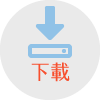簡易檢索 / 詳目顯示
| 研究生: |
劉寶蓮 Pao-Lien Liu |
|---|---|
| 論文名稱: |
專利公開案與對應公告案之分類號於各產業之差異研究 The study of the difference between the classification codes assigned to pre-grant publications and their corresponding issued patents within different industries |
| 指導教授: |
管中徽
Chung-Huei Kuan |
| 口試委員: |
劉顯仲
John S. Liu 蘇威年 Wei-Nien Su |
| 學位類別: |
碩士 Master |
| 系所名稱: |
應用科技學院 - 專利研究所 Graduate Institute of Patent |
| 論文出版年: | 2016 |
| 畢業學年度: | 104 |
| 語文別: | 中文 |
| 論文頁數: | 65 |
| 中文關鍵詞: | 專利分類號 、專利公開案 、專利公告案 、差異程度 、產業別 |
| 外文關鍵詞: | patent classification codes, pre-grant publications, issued patents, difference, industrial classifications |
| 相關次數: | 點閱:1569 下載:14 |
| 分享至: |
| 查詢本校圖書館目錄 查詢臺灣博碩士論文知識加值系統 勘誤回報 |
專利分類是專利文獻中的重要資訊,專利人員常使用專利分類號進行專利檢索或專利分析。專利文獻有公開案及公告案兩種,因此可使用公開案或公告案為專利檢索及分析的對象。然而公開案與對應公告案的專利分類號並不一定相同,而此種現象將會造成專利檢索及分析結果的差異。對此,先前研究計算了2012年美國專利公告案與對應公開案USPC分類號的差異程度,然而此研究結果對於專利分類號的實際應用仍略顯不足,本研究將2012年美國發明專利分成26種產業,並計算各產業專利公開案與對應公告案USPC分類號差異程度。本研究結果顯示,比較USPC主要分類號之主類號相同率最高,大部分產業相同率都在78.76%上下10%的範圍內。但有兩個產業相同率特別低,分別是基礎化學業以及樹脂(相同率49.21%)、合成橡膠和人造及合成纖維和長絲產業(相同率45.85%)。此外,本研究藉著公開案與對應公告案的分類號對應關係(USPC主要分類號之主類號),分別建構了2012年整體專利資料以及各產業專利資料的USPC主類號對應關係圖。從USPC主類號對應關係圖中可以觀察,不同產業中哪些主類號間的關係較大,以及哪些主類號容易與多個主類號發生對應關係。因此本研究建議在使用公開案進行專利檢索或分析時,要特別注意這兩個產業的結果會與對應公告案之結果相差很大。另外,在專利檢索時,可利用本研究的分類號對應關係圖來制訂檢索條件。
Patent classification is one of the most important information. Therefore professionals usually use patent classification code to conduct patent search or patent analysis. There are two kinds of patent document, pre-grant publications and issued patents, so they could be the subjects of patent search or analysis. However, classification codes assigned to pre-grant publications and their granted patents may possibly be different. This situation will cause the different result of patent research or analysis. To get a better understanding of this problem, the former study had calculated the similarities of USPC codes assigned to United States pre-grant publications and their granted patent which were issued in 2012. However, the study to the whole patents of 2012 is not precise enough for practical application of classification codes.
This study divides the whole United States patents in 2012 into 26 industrial classifications and calculates the similarities of USPC codes assigned to pre-grant publications and corresponding granted patents within each industrial classification. This study finds that only considering the class code of primary classification is more appropriate for patent search and analysis using pre-grant publications as there are around 78.79% of the similarities in most industrial classification. However, there are two industries having the less similarities, namely Basic Chemicals and Resin (49.21%), Synthetic Rubber, and Artificial and Synthetic Fibers and Filaments (45.85%). Moreover, this study constructs the USPC codes (class code of primary classification) corresponding relationship of the whole patent data and each industrial patent data by the relationship of pre-grant publications and corresponding granted patents. It is hoped that the corresponding relationship diagrams can be useful to determine search terms by professionals when conducting patent analysis.
中文部分
林展逸 (2014)。專利公開案與其對應公告案之專利分類號差異研究(未出版碩士論文)。國立台灣科技大學,臺北市。
郭光輝、郭俊賢、殷正華、林翠芊、蔣亞婷(民92),《生物分子馬達專利地圖及分析》,頁54,臺北市:行政院國家科學委員會科學技術資料中心。
陳起行(2002),《美國軟體專利論,1966-1991¬─法與資訊研究》。
陳達仁、黃慕萱(2009)。《專利資訊檢索、分析與策略》,初版,頁172~184。臺北市:華泰文化事業股份有限公司。
張瑞芬、張力元、吳俊逸、樊晉源(2013),《專利分析與智慧財產管理:以資訊技術與知識管理為手段》。
電學發明審查部IPC教研組(2010),《電學領域國際專利分類》。
楊鐵軍、曾志華(2011)。《專利信息利用技能》,頁8及頁416~419。北京市:知識產權出版社。
鄭凱安、馬仁宏、賴志遠、林殿琪(民93),《磁性記憶體專利地圖及分析》,頁24-26,臺北市:行政院國家科學委員會科學技術資料中心。
英文部分
ESA & USPTO (2012). Intellectual Property and the U.S. Economy: Industries in Focus. Retrieved from http://www.uspto.gov/sites/default/files/news/publications/IP_Report_March_2012.pdf
Hall, B. H., et al. (2001). The NBER patent citation data file: Lessons, insights and methodological tools, National Bureau of Economic Research.
Hirabayashi, J. (2003). Revisiting the USPTO Concordance Between the US Patent Classification and the Standard Industrial Classification Systems. WIPO-OECD Workshop on Statistics in the Patent Field, Geneva, Switzerland
IP5 (2015). Key IP5 Statistical Indicators 2015,Retrieved April 2016 fromhttp://www.fiveipoffices.org/statistics/keyindicators2015.pdf
Johnson, D. K. (2002). "The OECD Technology Concordance (OTC)."
Kortum, S. and J. Putnam (1997). "Assigning patents to industries: tests of the Yale technology concordance." Economic Systems Research 9(2): 161-176.USPTO (2013). Management's Discussion and Analysis. Performance and Accountability Report fiscal year 2012(p.15-20). Retrieved from http://www.uspto.gov/about/stratplan/ar/USPTOFY2012PAR.pdf
Park, J., et al. (2009). "Disembodied knowledge flows among industrial clusters: A patent analysis of the Korean manufacturing sector." Technology in Society 31(1): 73-84.
Schmoch, U., et al. (2003). "Linking technology areas to industrial sectors." Final Report to the European Commission, DG Research 1(0): 100.
United Nations (2008). International Standard Industrial Classification of All Economic Activities Revision 4. Retrieved from USPTO (2014). U.S. Patent Statistics Chart Calendar Years 1963 - 2014, Retrieved April 2, 2015 from http://www.uspto.gov/web/offices/ac/ido/oeip/taf/us_stat.htm
U.S. Census Bureau. North American Industry Classification System. Retrieved from http://www.census.gov/eos/www/naics/
USPTO (2013). Chapter One: Organization of Information. Examiner Handbook to the U.S. Patent Classification System, Retrieved from http://www.uspto.gov/page/examiners-handbook-chapter-one-organization-information
USPTO (2012). Patent Analysis for Placement into System (Claimed Disclosure). Examiner Handbook to the U.S. Patent Classification System, Retrieved from http://www.uspto.gov/page/examiners-handbook-chapter-three-patent-analysis-placement-system-claimed-disclosure
USPTO (2012). Patent Technology Monitoring. Team Patenting By Geographic Region (State and Country) Breakout By NAICS Industry Classification Retrieved from http://www.uspto.gov/web/offices/ac/ido/oeip/taf/naics/stc_naics_fgall/all_stc_naics_fg.htm
USPTO. Data Visualization Center. Office Time and Applicant Time - Traditional Total Pendency. Retrieved from http://www.uspto.gov/corda/dashboards/patents/main.dashxml?CTNAVID=1004
USPTO Patent Technology Monitoring. U.S. Patenting Trends by NAICS Industry Category Utility Patent Grants, Calendar Years 1963-2012. Retrieved from http://www.uspto.gov/web/offices/ac/ido/oeip/taf/naics/naics_toc.htm
http://unstats.un.org/unsd/publication/seriesM/seriesm_4rev4e.pdf
USPTO. US Classes by Number Menu, Retrieved from http://www.uspto.gov/web/patents/classification/selectbynum.htm
WORLD BANK & OECD. Innovation Policy Platform. Patent data - Emerging technologies, Retrieved from https://innovationpolicyplatform.org/content/patent-data-emerging-technologies
